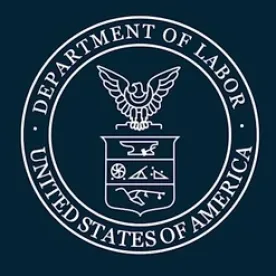Nearly six months after the US Department of Labor (DOL) issued regulations under the Families First Coronavirus Response Act (FFCRA), those regulations have been revised (effective September 16, 2020) in response to a federal district court decision invalidating a handful of provisions interpreting the FFCRA. The DOL responded by revising some of the regulations to reaffirm the DOL’s original positions and amend others.
Availability of Work Requirement
First, the DOL reaffirmed that FFCRA leave may only be taken if the employer actually has work available for the employee. If an employee isn’t scheduled to work (e.g., the business is closed or the employee has been furloughed), there’s no work from which the employee can take leave, so the employee is not eligible for FFCRA leave. The qualifying FFCRA reason for leave must be the sole reason the employee isn’t working, so if an employee isn’t expected or required to work, that’s not leave. The DOL cautioned employers not to withhold work to keep an employee from taking FFCRA leave, noting the unavailability of work must be for legitimate, nondiscriminatory, non-retaliatory business reasons.
Intermittent Leave with Approval
Second, the DOL confirmed that intermittent leave under the FFCRA may only be taken with employer approval. Intermittent leave is, simply put, leave taken in separate blocks of time for a single qualifying reason. In its clarification, the DOL focuses on what intermittent leave means for employees who need leave to care for a child whose school or place of care is closed. Each day of school closure constitutes a separate reason for leave that ends when the school opens the following day (i.e., hybrid in-person schedules), so intermittent leave isn’t necessary. But if the employee needs leave when the school is closed for reasons other than the school’s in-person instruction schedule, this is intermittent leave and requires the employer’s agreement.
Narrowed Definition of “Health Care Provider”
Third, the DOL amended its definition of “health care provider” in the context of the FFCRA’s provision allowing employers to exclude health care providers from some or all forms of FFCRA leave. As originally defined, “health care provider” was very broad and focused on the types of employers that could exercise the exemption. Now the DOL has narrowed the scope to focus on employees who actually provide health care services. This refers to nurses and others who directly provide or assist in providing diagnostic, preventive, treatment, or other integrated services, including those who are otherwise integrated into and necessary to the provision of health care services. This last catchall includes employees such as lab technicians who process test results necessary for diagnosis and treatment. The revised regulations also provide a non-dispositive list of typical work locations for those who are considered health care providers.
Timing of Documentation
Finally, the DOL offered clarification on when an employee must provide notice of the need for leave and supporting documentation. Now, documentation need not be provided before leave begins, but should be given “as soon as practicable,” typically when the employee provides notice of the need for leave. If the leave is foreseeable (e.g., a school closure), the employee should provide notice before taking leave.
The biggest takeaway is for employers in the health care industry. Where an employer provides health care services and may have previously excluded all of its employees from being able to take paid leave under the FFCRA, the employer now needs to conduct an individualized assessment as to whether the employee who requests leave is a “health care provider,” meaning the employee actually provides health care services. Employers that need help navigating these new regulations or the FFCRA generally should reach out to their employment counsel to avoid a potential headache down the road.





 />i
/>i

